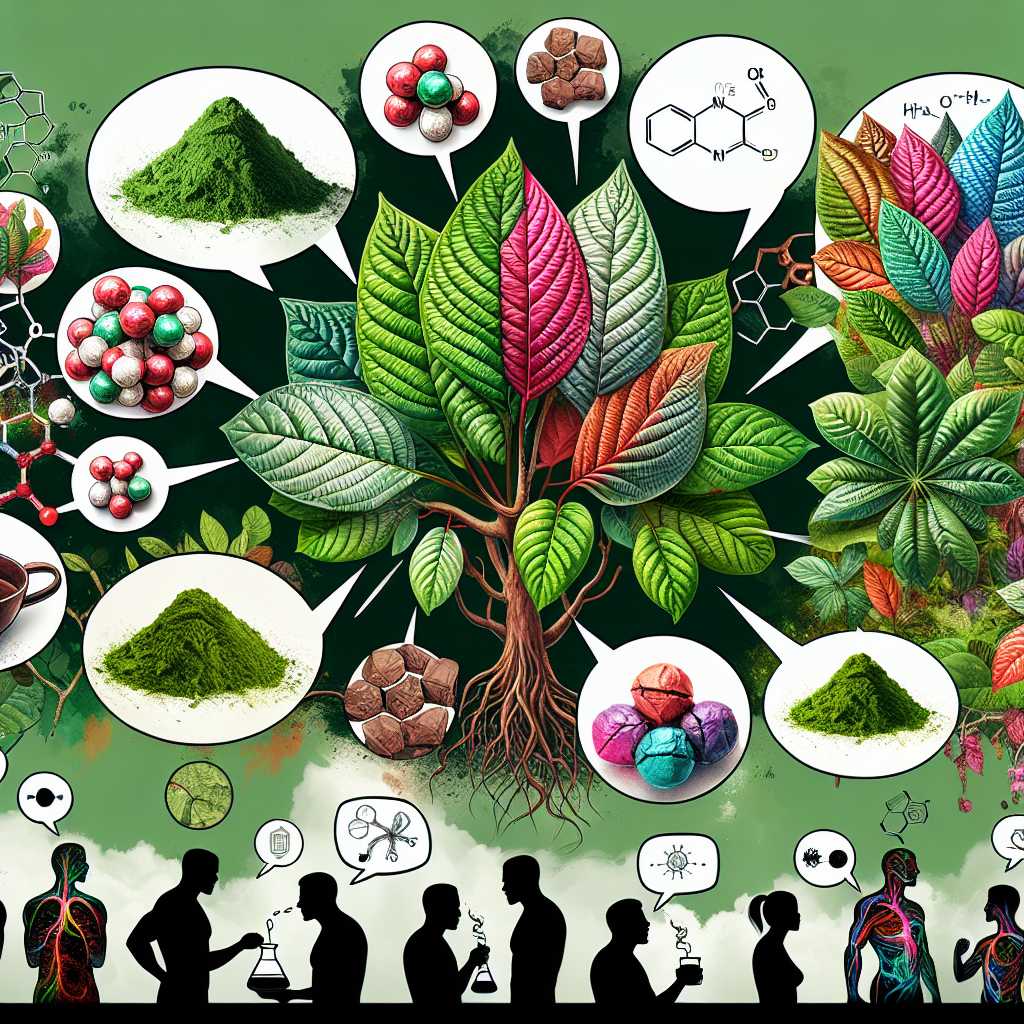Understanding Kratom: An Overview from Biological Origins to Legal Status
Kratom, or Mitragyna speciosa, is a tropical evergreen tree native to Southeast Asia, particularly found in countries like Thailand, Indonesia, Malaysia, and Papua New Guinea. Its leaves have been used for centuries for their psychoactive properties and are considered part of traditional medicine in the region, known for their stimulant effects at low doses and their opioid-like effects at higher doses.
Cultivation and Species Variance
Kratom trees typically thrive in a warm and humid environment, reaching heights of up to 25 meters. There are several strains and varieties distinguished by the region of cultivation and the color of the veins in their leaves—typically red, green, or white. Each strain is considered by users to produce slightly different effects.
Traditional Use and Cultural Significance
In its indigenous regions, Kratom leaves were traditionally chewed by manual laborers to reduce fatigue and increase productivity. In local customs, Kratom was also utilized in socio-religious ceremonies and as a substitute for opium when it was not available as well as being incorporated into traditional medicine to treat various ailments like pain, fever, or diarrhea.
The Effects of Kratom: From Stimulation to Sedation
Kratom’s effects are credited to its various alkaloids, with mitragynine and 7-hydroxymitragynine being the most studied. These substances interact with opioid receptors in the brain, which can result in pain reduction, euphoria, or sedation. However, unlike classical opioids, Kratom constituents can also act on other receptor systems, contributing to its unique pharmacological profile.
The leaves can be consumed fresh or dry. They can be chewed, brewed into tea, taken in capsule form or as an extract. Users report different effects: energizing and mood-lifting at lower doses and more sedating at higher doses. It is often claimed to help with opioid withdrawal symptoms.
Global Legal Status and Controversies
Kratom’s legal status varies broadly across the world. While it remains legal in much of the United States on a federal level (though some states have chosen to ban it), other countries have differing policies. For instance, while it is a scheduled substance under some jurisdictions where it’s categorized similarly to other controlled substances such as opioids, elsewhere it remains unregulated. The uneven legal landscape reflects global debates on its benefits versus potential for abuse and harm.
In some countries where it is native, such as Thailand, Kratom was prohibited for decades before recent relaxation occurred due to advocacy highlighting traditional usage. Meanwhile, regulatory authorities like the U.S. FDA have not approved it for any medical use while expressing concern about safety risks such as addiction potential.
Medical Research and Public Health Concerns
The burgeoning interest around Kratom has led to increasing scientific research seeking to unlock its potential benefits and understand its risks. Studies have explored topics ranging from its analgesic properties to its efficacy in alleviating opioid withdrawal syndrome. Nonetheless, the research community has raised concerns regarding the need for standardized dosing, long-term health consequences, rigorous clinical trials, and the products’ quality control on the market.
Public health officials caution about possible dangers citing reports from poison control centers and cases studies linking Kratom use to toxicities, psychosis symptoms in individuals with a history of mental disorders, dependence issues resembling opioid-type withdrawal symptoms upon cessation of prolonged use.
